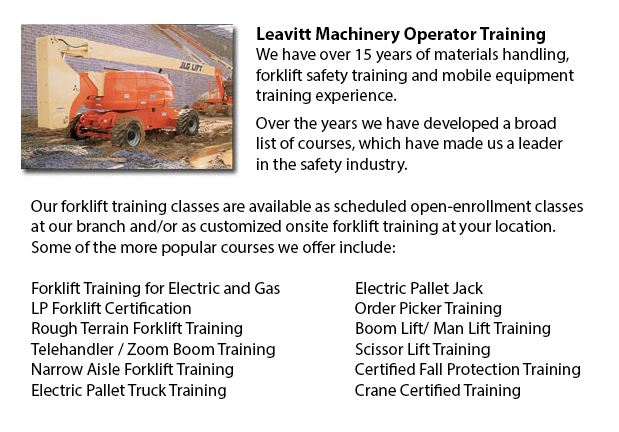
Aerial Boom Lift Training British Columbia - Aerial Boom Lift Training is needed for any person who operates, supervises or works near boom lifts. This type of aerial lift or aerial work platform is utilized for lifting people, tools and materials in projects requiring a long reach. They are generally utilized to access utility lines and other above ground job-sites. There are different types of aerial booms lifts, such as extension boom lifts, cherry pickers and articulating boom lifts. There are two kinds of boom lift: "knuckle" and "telescopic".
Boom lift training is important and typically involves the fundamental equipment, safety and operations matters. Workers are needed when working with mobile machines to understand the safe work practices, rules and dangers. Training course materials offer an introduction to the applications, terminology, skills and concepts needed for employees to gain competence in boom lift operation. The material is aimed at workers, equipment operators and safety experts.
For your company needs, this training is adaptive, cost-effective and educational and will help your workplace become safer and more effective, allowing for higher levels of production. Fewer workplace incidents take place in workplaces with stringent safety guidelines. All equipment operators must be trained and assessed. They require understanding of existing safety standards. They should understand and adhere to guidelines set forth by their employer and local governing authorities.
Employers are required to make certain that their workers who operate aerial boom lifts get proper training in their safe use. Operator certification is needed on each different type of aerial equipment used in the workplace. Certifications are offered for aerial work platforms, articulating booms, scissor lifts, industrial forklift trucks, etc. Employees who are fully trained work more effectively and efficiently than untrained workers, who require more supervision. Proper training and instruction saves resources in the long run.
The best prevention for workplace fatalities is right training. Training could help prevent electrocutions, falls and collapses or tip overs. Aside from getting the needed training, workplace accidents can be better avoided by using the aerial work platforms based on the manufacturer's instructions. Allow for the total weight of the worker, tools and materials when adhering to load limitations. Never override mechanical, electrical or hydraulic safety devices. Workers should be securely held inside the basket using a restraining belt or body harness with an attached lanyard. Do not move lift equipment whilst workers are on the elevated platform. Employees should be careful not to position themselves between the basket rails and beams or joists in order to avoid being crushed. Energized overhead power lines must be at least 10 feet away from the lift machinery. It is suggested that employees always assume wires and power lines might be energized, even if they are down or appear to be insulated. Set the brakes and use wheel chocks if working on an incline.
-
Warehouse Forklift Safety Training British Columbia
Warehouse Forklift Safety Training British Columbia - The corporation would face claims for liability when damage and injuries are sustained in an accident at the workplace. Warehouses can be a hazardous place to work for its workers, making employee... More -
Loader Operator Certification British Columbia
Loader Operator Certification British Columbia - Courses Offered For Getting Loader Operator Certification - Certification for forklifts are required to guarantee the safe operation of forklifts for those employers in industrial, warehouse or constru... More -
Crane / Overhead Crane / Self-Erect Crane / Truck Mounted Crane / Hydraulic Cranes Training in British Columbia
Bridge cranes or likewise called overhead cranes are actually a type of industrial material handling crane making use of a line and hook device that runs on a horizontal beam running along two widely separated rails. Numerous overhead cranes could be... More -
Scissor Lift License British Columbia
Scissor Lift License British Columbia - The operation of scissor lifts carries an inherent chance of danger. Whichever type of powered machine requires correct handling to prevent accidents causing injury or damage. Companies need to make certain tha... More -
Heavy Equipment Training Schools British Columbia
Heavy Equipment Training Schools British Columbia - There are a lot of heavy equipment training schools to select from. If you want to get to the best, it is important to check various aspects of the school in order to ascertain the level of educatio... More -
Telehandler Training British Columbia
Telehandler Training British Columbia - Telescopic handlers usually called telehandlers for short, are an extremely popular piece of heavy construction equipment. They are commonly utilized in the construction and agricultural trades. These machines... More -
Forklift Training Courses British Columbia
Forklift Training Courses British Columbia - When forklift operator safety training is tailored for illiteracy, training time is lessened by 50%. Forklift training certification, lift-truck operator driver safety training evaluation, and train the tr... More -
Heavy Equipment Operator Training British Columbia
Heavy Equipment Operator Training British Columbia - Heavy equipment operator training facilities which provide quality standards in the business, providing field performance work and added machinery training are highly sought after training features... More

Forklift Training British Columbia
TOLL FREE: 1-888-254-6157
forklifttrainingbritishcolumbia.com
Email Us
About Us


